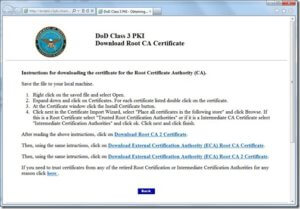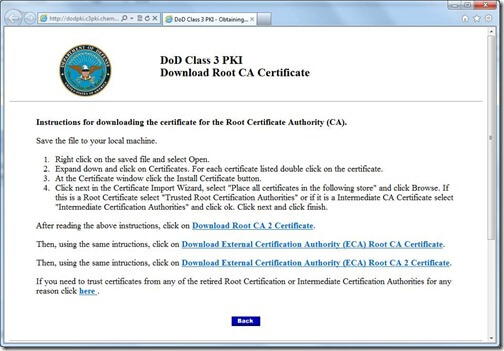



Subscribers will still need ActivClient Software to work with this proprietary app. Hardware-based certificates will use a proprietary app to download the certificates onto smartcards or USB tokens instead of a browser.The request process and the process to download software-based certificates will be browser-independent.Customers will now create individual accounts at our site to make certificate requests and download certificates to enhance security.Close the import wizard application and try the URL again in the EDGE browser.You should get a "import successful" message.A final popup will appear "Completing the Certificate Import Wizard".Select manual option, "Trusted Root Certificate Authority". A new popup window will appear asking you to allow Windows to choose the "certificate Store" based on the certificate, or allow you to specify the certificate store manually.The popup should now display the full path to your certificate file, foo.crt.A new popup window will appear asking for the File Name: Browse and select your exported certificate file, foo.crt and Click Open.A popup window will appear asking for the "Store Location" Select Current User or Local Machine.From the menu bar select "Action" > "All Tasks" > "Import.".Start a cmd shell and type the command "certmgr.msc" to open the certificate wizard.Click on Export to File (any location, foo.crt).Click on the red certificate error message to view the failing certificate.To allow a self-signed certificate to be used by Microsoft-Edge it is necessary to use the "certmgr.msc" tool from the command line to import the certificate as a Trusted Certificate Authority. Microsoft EDGE does not directly have a way to manage certificates or import certificates in order to avoid certificate errors.


 0 kommentar(er)
0 kommentar(er)
